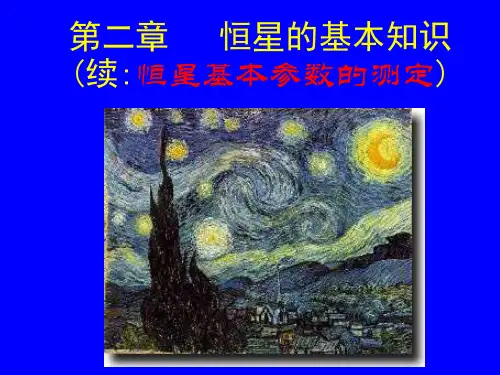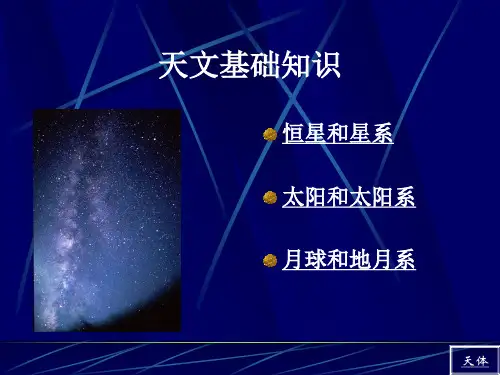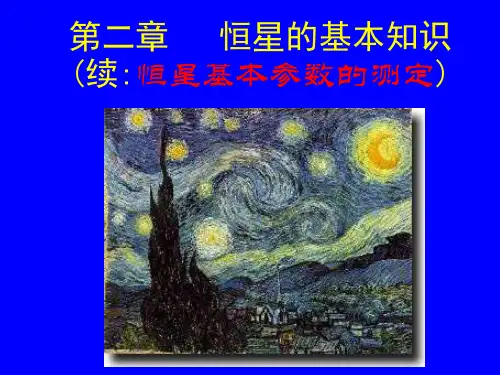下半主序星(Lower main sequence stars)的质量较小,光度
较低,质光关系大致为 L M 2,表面温度较低( Te ≤
6000 K ),其中心温度也较低( < 2.0 ×10 7 K ),氢 燃烧以pp链为主。
存在着所谓的“表面对流区”, 质量愈小的恒星表面对流区向内 延伸得愈深。由于小质量恒星氢 燃烧速度较为缓慢,它们停留在 主序(氢燃烧)的寿命也很长, 而且质量愈小,主序寿命愈长。
精品课件 2
什么是恒星?
恒星:由炽热气体组成的、能自身发光的球状或类球状 天体。 A star can be defined as a body that satisfies two conditions: (a) it is bound by self-gravity; (b) it radiates energy supplied by an internal source.
黄白 黄 红橙 红
特征谱线
强电离He线,重元素多次电离线, 无氢线。
中性He线,重元素一次电离线,很 弱的H线 强H线,重元素一次电离线(如 Ca+ ) 重元素一次电离线,弱H线和中性 金属线
强重元素一次电离线,中性金属线
强中性金属线,重元素一次电离线
强分子带,中性金属线,无氢线
❖ 每一种光谱型可以继续分为0-9十个次型。数字越小温度 越高。太阳的光谱型为G2 。
恒星的基本性质
§1.1 一些恒星的基本物理量及其测量 §1.2 赫罗图 §1.3 星族 §1.4 恒星演化的基本方程
精品课件 1
恒星在整个天体物理研究中所处的地位
Why do we study stars? • Stars to the cosmology is like as atoms in physics. To understand the whole universe, it is cs•prtaSuartcrtaisira.cslu,ltaiornluyndtehrestSaunnd, plays a crucial role in our lives










